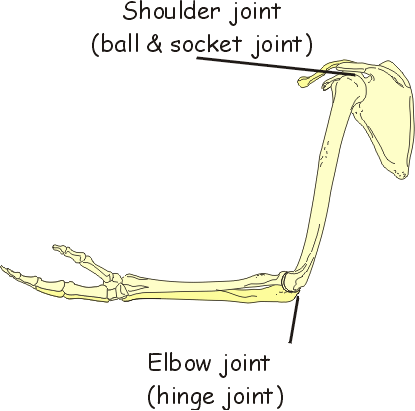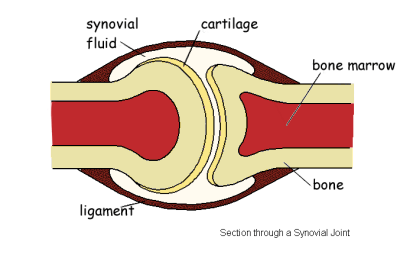Joints
Where two bones meet a joint is formed. Joints are classified according to the amount and type of movement between the two bones. The bones in the skull are examples of fixed joints. When we are born we have a soft spot at the top of our heads. This is due to the fact that the brain is not fully developed yet and it also makes birth easier than a fixed skull. The bones of the skull grow together and form a fixed joint.
There is a pivot joint where the skull meets the neck vertebrae. This allows side to side movement. Gliding joints (like those of the wrist and ankle) allow bones to move over one another.
The arm has two other joints in it.

The ball and socket joint (also found at the hip) is formed from a bone which has a rounded end. This fits into a hollow on another bone, formed by the shoulder blade in the diagram above. This allows movement in nearly all directions. This is in contrast to the hinge joint at the elbow (and the knee) which only allows movement in one plane only.
These moveable joints are all examples of synovial joints. These joints have a number of structures which help smooth movement between the bones.

- Cartilage - this is a smooth and slippery type of bone. It covers the ends of the bones where they touch. This helps reduce fiction.
- Synovial fluid - a bag containing this fluid separates the two bones. The fluid acts as a lubricant.
- Ligament - tough straps of connecting tissue keeps the joint together.
The cartilage and synovial fluid help to lubriacate the joint and reduce friction. This prevents the joint sticking.
